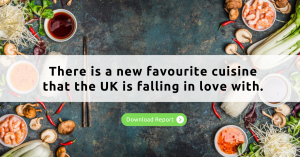Every year Google does a bit of Feng Shui to improve the dynamics of digital marketing. And not following suit will lower our content ranking. The standards that optimise your content for 2023 are here. For those who want to maintain their current top ranks and those who want to jump a few places forward, we are taking the time to explain how your 2023 strategy should be different.
1. There’s a new E in EAT
We all know Google’s EAT acronym, right? Expertise, Authority, and Trust. They are the principles that rate the quality of content for effectiveness in search results. Since December 2022 Google added another E, spelling EEAT.
The new E stands for Experience. The real-world experience of the content creator is now a quality rater. That means if you are giving medical advice, you should have real-world experience as a medical professional. If not, your content should feature professionals, qualified to comment or share their opinions.
Google will now look at the content as well as the content creator.
2. Not traffic but audience matters in 2023
Keywords generate website traffic. However, not all keyword-related content benefits your target audience. If you are selling insurance but writing about vintage tea flavours in the company blog, Google crawlers will find it suspicious. It means you are simply going after traffic and producing content about high-volume, non-relevant topics.
It will not give you ranking success in 2023. Your content should be relevant to your industry and audience. Use a content planning tool to generate relevant industry topics. Enter a keyword, and it will bring back many semantically related keywords your target audience is searching.
3. Real people with authority on subjects
It is similar to the new E in EEAT. Google is getting real about creators to combat auto-generated content ranking in the SERPs. It wants real people with real credentials to do the job. It means including author bios, author pages, and social media accounts of creators in your content. These bring validity to the content and assurance the content is the work of experts.
4. Created for humans by humans
High-quality content created for users has always been Google’s priority in its algorithm. But, come 2023, there’s a new emphasis on the terms ‘helpful’ and ‘satisfaction.’
So, what does Google mean by this?
- The content is for humans and not search engines.
- It speaks to the target audience.
- A high degree of relevance to the subject area or the topic the website covers.
- The creator has authority on the subject.
- The content displays in-depth knowledge of the subject.
A high content volume with little to no helpfulness to your audience, produced on low expertise, will no longer produce top-ranking results in 2023. Quality matters more than quantity.
5. CTRs by SERP positions have changed!
Endless scrolling, now enabled on mobiles and desktops, is a game-changer. It allows searchers more easily navigate across multiple pages of search results.
As Google keeps adding more featured snippets and search features like People Also Ask, CTRs may become a thing of the past. A recent SEMrush study showed that only 25.8% of searches resulted in zero clicks.
It means being on page two or three will not affect CTR. Optimise your page titles and meta descriptions for better engagement and clickability in the SERPs. Using features like schema markup can also help with clickability.
6. Additional features for product pages
Helpful details for users like drop-down menus, FAQs, shipping info, return policy, warranties, and customer reviews are additional content you can add to a product page. Google will reward you for this type of informative content.
7. Impact of Google’s reduced crawling
Google’s climate goals are coming into effect. It will reduce the frequency of crawling web pages to conserve computing resources. Reduced crawl rates will affect refresh crawls. It means it may take longer for Google to take notice of the new changes we make on our websites.
So, when launching a new website in 2023, it should have all the on-page elements necessary to rank.
8. Image inclusivity
Google wants to make content more accessible to all users. It prefers alt text and schema markup that help its crawlers better understand image content. Alt text also makes images more accessible to the visually impaired and those with limited bandwidth or connectivity challenges.
9. Faster and better
Until March 2022, Google has been rolling out the page experience update. It continues to refine signals that determine whether a page is high-performing for users. High-performing, fast-loading websites do better on the ranking algorithm. If you have a slow website that cannot load pages immediately, it is a dealbreaker in 2023.
Conclusion
Digital marketers should constantly be on their toes to keep up with Google’s new algorithm. And 2023 comes with some changes that will affect your SEO strategy. Staying on top of the ranking algorithm is essential to optimise your digital platform. Which of the strategies will you be revitalising first? Register for an SEO audit by Serendipity to check for loopholes keeping your website from doing amazing things.




